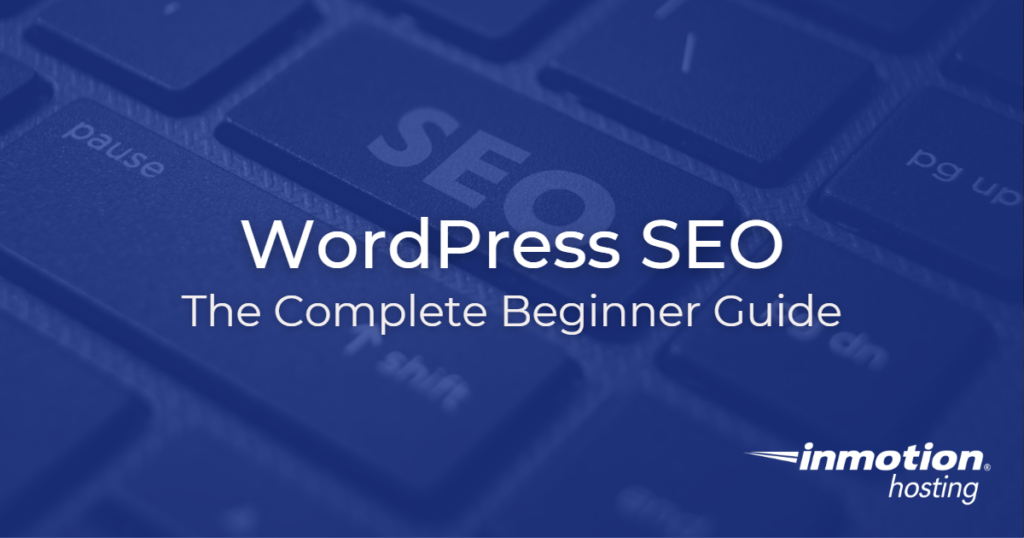
In this article, you will learn about the art of search engine optimization (SEO) within the WordPress system. The practice of WordPress SEO helps you discover what people are looking for, how they search for it, and how they will eventually find it.
Searchers search for all kinds of things. From new bikes, places to eat, or recommendations on entertainment. With SEO, you learn how to place your website in the optimal position to receive search traffic.
Here’s a typical SEO-related WordPress question:
“How do I improve SEO on my WordPress site? Is there a plugin that can cover all the SEO work for me?” —WordPress User
When it comes to SEO, WordPress already boasts impressive optimizations. Just write good content and follow a few basic guidelines to elevate your WordPress site into higher search engine rankings.
Getting The Most Out Of This Guide
This guide covers some SEO fundamentals with regard to the WordPress ecosystem.
Backlinks prove time and again the most significant ranking factor in the SEO game. Ranking troubles mount up against sites with low backlink profiles. All links to your pages count as backlinks, but the greatest of all come in the form of links from other websites.
Crafting good content earns you high quality links from good sites. Those links provide your pages the best chance of ranking highly.
In this guide, you will get the basics on how to create that high quality content as well as tend to some of the technical SEO issues that a webmaster has to deal with from time to time.
The first few chapters in this extensive guide contain a lot of conceptual ideas. Feel free to grab a coffee and start there. Or skip ahead to the later chapters, in which you get the actionable SEO steps you can start working on today.
For your navigation pleasure, feel free to skip around, take notes, or dip in and out of this guide.
Table of Contents
- Getting the most out of this guide
- 1. Where WordPress succeeds
- 2. How do I improve my SEO in WordPress?
- 3. Key concepts in SEO
- 4. Working with on-page SEO
- 5. How to craft better content
- 6. Learning about backlinks
- 7. What is defensible traffic?
- 8. Tracking technical issues
- 9. Using analytics to measure your SEO efforts
- 10. Grabbing and Going With WordPress SEO Plugins
1 Good WordPress SEO Attributes
In case you didn’t know, WordPress is a dynamic site generator. This means your WordPress website uses page templates and pulls content from a database to populate the template.
Instead of rendering finalized HTML pages, the page content is constructed based on queries to a database.
A lot of the reasons how and why this happens are not important (for now). Basically, all you need to know at this point is your WordPress site generates the code of your site, so you don’t need to code it yourself.
This is important to note, because throughout history different CMSs have generated pages differently. And not all of them have used clean code.
Search engines send “robots” out into the web to crawl pages, study their contents, and recommend pages to users.
WordPress generates exceptionally clean and well-integrated code. Search engines love WordPress because it’s so easily crawlable.
It’s not perfect, however. The cleanliness of your site code can be muddied with excessive plugin use. And some themes are constructed better than others. But, in general, WordPress code is neat and easily crawlable by search engines.
1.1 Editing Your Permalink Structure
Right out of the box WordPress supports SEO-friendly URLs, or, in WordPress speak, pretty permalinks.
With pretty permalinks, you can generate clean URLs. So instead of a URL that looks like this:
example.com/index.php?p=345
You can have a nice optimized URL like this:
example.com/my-new-website/
URL optimization will become critically important when optimizing your pages on your site for certain search queries and keyword phrases.
For example, if you want to rank better for the search term “best seo tips,” you’ll want to use a clean URL like this:
example.com/best-seo-tips/
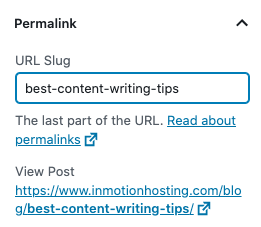
Placing your primary keyword in the URL is considered a best practice for on-page SEO.
1.2 Internal Navigation Structure
The natural WordPress navigational structure is easily digestible by search engines.
WordPress gives you a choice between two default types of written content: pages and posts. (You can create alternate types of content, with custom post types.)
Posts and pages provide the best examples of how you can utilize both types.
Pages are hierarchical. This means you can “nest” pages under each other.
With a hierarchical structure, the important pages are closer to the root level domain, and subpages are nested below. You should think of this structure not only as a way to organize pages, but how your website organizes its information.
The hierarchical structure also applies to menus.
The use a hierarchy gives meaning and weight to your pages in a way that search engines can easily understand. WordPress gives you this important functionality right out of the box.
1.3 Running a Blog in The Background (Or The Foreground?)
WordPress was built first as a blogging engine. It has blogging features built in. However, this doesn’t mean you’re required to blog if you don’t want to. You can use WordPress merely as a content management system for a handful of landing pages.
However, there are serious SEO benefits to having a blog.
Having a blog is a great way to build more content around your website. More content is always a way to add extra keywords to your site. And you can always use blog posts as a way of introducing keywords into your site’s overall content strategy.
But if the content is bad, it doesn’t matter how many keywords are introduced into Google’s index.
Having great content means you should be able to write well, or at least hire someone to do the writing for you.
1.4 Comment Forms Built In
Comments are one of the best forms of engagement you can host on your site. While it is unknown whether or not comments on your pages directly improve SEO results, it is a strong indicator that people are finding your pages and interacting with your content.
If people are finding your pages and interacting with your content, you can take it as a given that your SEO efforts are already paying dividends.
WordPress supports comment forms by default. No coding required. Comment capabilities are automatically turned on, but you can turn them off per post as needed.
As you’ll be accepting comments on your pages, it’s recommended to have a comment policy. Comments are a form of user-generated content. If someone generates content that is unsavory or disagreeable in some way, you can moderate accordingly. As a good faith effort, it’s best to publish your policies in advance so that users can abide by them.
1.5 Built-in Privileges and Roles For External Contributions
Producing high quality content is one of the most important SEO ranking factors. However, producing at least 2 to 3 high quality articles every month is a daunting task. This is why some blog owners open up their sites for contributors.
If you decide to open your site for third-party contributions, WordPress makes it very easy with built-in user roles.
With user roles, you can grant third-party writers a user account, which they can use to upload their content, but are not able to publish without your approval.
This allows you to control all of the content on your site while opening it up for others to contribute.
2 How To Improve Your SEO in WordPress
No system is perfect. Even WordPress comes with a few possible SEO issues you will have to fix yourself.
2.1 Duplicate Content
One of first problems you will face when optimizing your site for SEO is duplicate content. In the world of SEO, duplicate content is a big no no.
WordPress automatically generates “archive” pages. For example, if you have categories and tags for your posts, WordPress generates new pages that display content associated with those tags. There are also archives for months and years.
That’s a lot of duplicated content all over your site.
This is a big problem for search engines. You can imagine why. Several pages have the exact same written content on them, the search engine doesn’t know which one to serve in search results.
2.2 Optimizing For Archive Pages
Now, Google is quite aware of this and generally does well scanning WordPress sites. WordPress sites are very common.
But why take a chance? There are steps you can take to avoid duplicate content.
First things first, you can check your theme. Some themes will only display an excerpt of the post in archives pages. This means the list of posts in archive pages will not generate full content, only a snippet.
Also, there are WordPress SEO plugins that can ask search engines to not crawl archive pages.
To be sure, archive pages have their function. Some archive pages are so well-optimized, they can rank number one for a search term.
If you really want to get creative with your category and tag pages, some custom theme coding is the answer for you.
2.3 Custom Post Types For Master Level SEO
Creating custom post types is an advanced solution, but probably the best one. WordPress right out of the box is easy to customize, but it lacks some flexibility for master-level SEO judo.
Nevertheless, custom post types is the best way to get complete, granular control over the content of your pages.
For a better understanding of how custom post types work, you are best advised to read the how-tos available in the Support Center about how to create custom post types, but here’s a brief introduction to custom post types.
3 Key Concepts in SEO
Below, we’ll cover some of they key concepts in SEO that come up all the time. It’s best to glance through this section to familiarize yourself with the concepts. Then, continue your education by delving into each of these areas more deeply.
3.1 Keyword Research
Keyword research is all about finding the ideal search queries your content should rank for. For example, if you sell bikes, you might want to rank for “bike shop” plus the name of your city.
Most SEO journeys begin with keyword research. But, as you can probably tell from reading through this guide, WordPress SEO is about a lot more than just choosing the keywords.
Much of your work will involve planning relevant and authoritative content around your selected keywords—and that’s easier said than done.
Nevertheless, keyword research is still an important part of the process.
Bearing that in mind, keyword research doesn’t need to be complicated.
3.1.1 Picking a Keyword Tool
There are many SEO tools out there, both free and paid, that can help you discover worthwhile keywords to target.
Your best bet is to search around the web for a tool that works for you.
When searching for a tool, one of the most important factors to keep in mind is keyword difficulty.
Keyword difficulty is measured somewhat differently by different tools, but in general each tool will give you an idea of how much competition you’ll face in ranking for that keyword.
For example, ranking for “mark twain” will be highly competitive. You’d be unlikely to rank higher than a popular website with a lot of backlinks like Wikipedia. In this case, maybe a keyword like “best mark twain books” might be more in your range.
3.1.2 Planning Out Your Content
Once you’ve generate a list of keywords you’d like to target, it’s best to sort them by difficulty and start planning your content.
Many content planners might use a spreadsheet, so they can align a keyword with its various data in one table. But you can choose whatever tool works best for you.
The point is to have one source of truth where you can view your keywords and plot out a course for best representing them in your content.
3.2 Searcher Intent
Searcher intent is about seeing what your ideal page visitors are searching for out in the web and aiming your content toward those queries.
The point is to do this kind of research and incorporate what you learn into your content organically.
3.2.1 What People Are Searching For
You can find all kinds of sophisticated tools out there that help you find out exactly what people are searching for in various search engines.
Some of these tools are free. Some of them cost hundreds of dollars a month.
For the cheapest and shortest shortcut, you can start typing a search query into Google and look at the auto suggestions. You’ll notice Google begins to auto-complete your query. That’s a hint.
Then, once you have the results before you, click the top 3 or 4 links and analyze those pages.
Take a look at:
- The words the page uses
- Any comments on the article
- How many headings are used?
- Is the keyword (search query) used in the title or level 2 headings?
3.3 Link Building
Link building involves various strategies for growing the amount of links to your site’s pages organically.
The basic idea behind link building is the well-founded belief that the more links in the web point to your site the better your search engine rankings will be.
Under that initiative, almost anything from proper keyword planning, searcher intent, and solid content are forms of link building. After all, without those things you would face great difficulty in getting any links at all.
But larger link-building campaigns might involve some mix of the following:
- Reaching out to complimentary sites, asking if they might consider linking to you
- Guest posting content on other websites
- Contributing your knowledge in forums and niche communities
All of these “outreach” strategies come at some cost, mostly in the labor involved in making these connections.
But the effort can pay off hugely if your site pages earn large numbers of links.
The other great cost in link building is making sure that your site earns “high quality” links. This means you must be careful not to solicit links from backdoor, low quality sites. This could actually hurt your rankings in search engines.
3.4 On-page vs technical vs outreach
You’ll notice there are many different schools of thought in SEO. You may see different articles or courses or videos focusing on different strategies and efforts.
But the majority of every day get-your-hands-dirty SEO comes down to a few basic tenets:
- Content
- User experience
- Technical issues
- Promotion
You need good content as one of pillar of your site, but multiple pillars are necessary. User experience, another pillar, is also considered an important factor in search engine rankings—particularly mobile responsiveness.
Likewise, technical issues might dog your site, particularly crawl errors and HTTP errors.
And without some kind of promotion, you will have a hard time building link strength on your site. We will cover these issues further elsewhere in the guide.
3.5 Schema Markup
Have you ever searched Google for a recipe and found that the search engine not only displayed page links but actually “scraped” the recipe itself right off a top-ranking page? Those scraped results, commonly known as “rich snippets,” can greatly improve your page rankings.
Schema markup helps search engines identify key data on your pages that can become rich snippets. Schema markup can be placed in your page templates or via SEO plugins.
4 On-page SEO Optimization (The Raw Meat of WordPress SEO)
There is a lot of information out there about doing on-page SEO. In this section, you will see the most widely recognized best practices. As you go along in your WordPress SEO journey you will probably learn more techniques and tricks, but for now these are the best places to start.
4.1 Editing Your URL
As mentioned above, WordPress uses SEO-friendly URLs. In WordPress speak those kinds of URLs are called “pretty permalinks.”
You’ll notice when editing posts, you can edit the post permalink. It is recommended to put your target keyword into the permalink (URL).
4.2 Mention Your Target Keyword in the Meta Title and Description
You may hear these editable areas referred to as “meta tags” or just “meta.” They get their names from their position in the HTML code of your page, the “meta” area at the top of the page.
Now, because WordPress uses page templates, you cannot edit this information directly. However, you can easily do it with a plugin. (More about plugins toward the end of this guide.)
Editing meta tags in the Yoast WordPress SEO plugin:
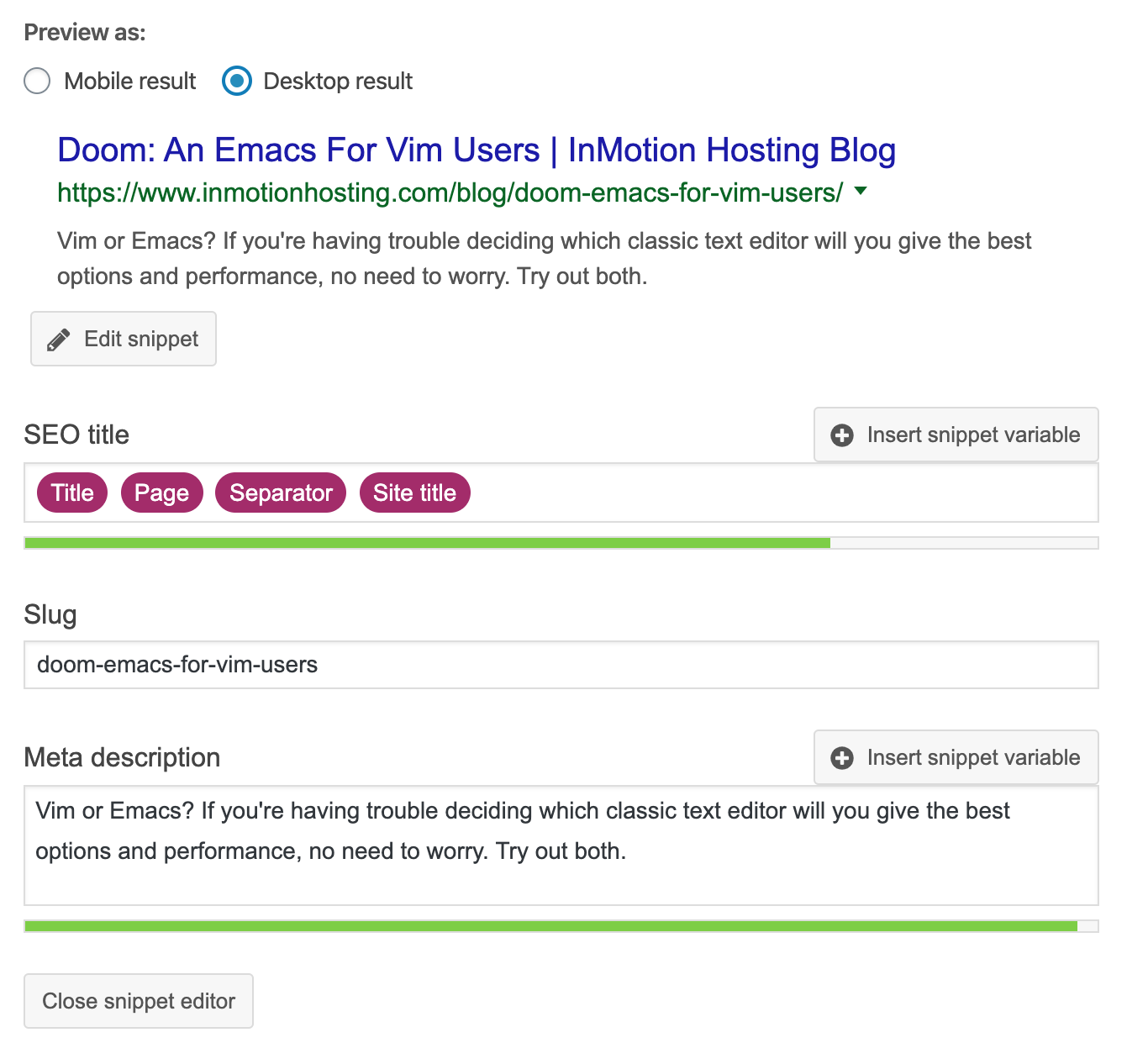
4.3 Work Your Target Into a Heading (Level 2 Recommended)
It is recommended that you use the target keyword at least once inside of a level 2 heading.
WordPress makes it easy to create level 2 headings. Simply create a new block in the editor window and choose “Heading.” By default, a level 2 heading is assigned.
Level 2 headings are used by default because heading level 1 must only be used once on a page. In most WordPress themes you’ll find that heading level 1 is reserved for the title of the page.
5 Crafting Good Content
Crafting high quality content is perhaps the most difficult but also most important part of your WordPress SEO campaign.
5.1 Authority and Link “Juice”
In general, you might hear someone tell you your content should be authoritative. That is to say, your content should be expert-level in order to rank well in search engines.
How do search engines know if your content is more “authoritative” than the next guy’s? Authority is difficult to pin down.
Take it as a given that the quality or efficacy of the content is not exactly what the search engines are looking at. It’s most probable that search engines are looking at links.
How many other pages on the web link to your page? This is the best indicator we currently have for authority.
If many websites link to your page, they must have found something valuable there. Therefore, you must write link-worthy content in order for it to gain links and thus level up your page authority.
5.2 Content Richness and Multimedia
Another top ranking factor that’s easy to let slip is what I call “content richness,” sprinkling in images, videos, infographics, or other visual eye candy into your pages.
There are so many benefits to content richness, but here are just a few:
- Entice people to stay on your page longer
- Attract attention to important messages
- Create positive memories of your site to encourage future visits
The down side of this is that good media is difficult to create. But there are software services available now that let you create impressive graphics with a few clicks, including:
6 Improving Your URL Strength With Backlinks
It’s good to know the difference between backlinks and referring domains and how they can signal the rank value of your site pages.
6.1 Backlinks
As mentioned in the section on crafting good content, the number of natural backlinks your site pages earn can add to an impressive SEO profile.
Backlinks are any kind of link. These will include links from other websites, or internal linking you do on your site.
In general, a page with a lot of backlinks is doing well. But this doesn’t mean that you can create new pages just to link to your own pages so you can fool the search engines. The search engines are smart enough to see that scam.
This is why links from other websites are weighted with more value. A unique link from a totally different website is counted differently.
6.2 Referring Domains
When you’ve earned a link from a different website, that counts a referring domain. A different domain out in the web has referred to you via a link. While a single can send you virtually unlimited backlinks, a referring domain itself only counts once.
A webpage with a high number of referring domains has a good chance of ranking highly for its keywords in search results.
7 Diversify Your Sources of Traffic
Search volatility is a term you’ll often hear in the SEO world. All search optimization efforts can change overnight if Google changes their algorithm.
Algorithm, or “algo,” updates happen from time to time. This is why SEO experts generally advise having “defensible” traffic, or “diverse” traffic. Also, in similar terminology, they might recommend that you “diversify” your traffic.
These are all ways of saying the same thing: it’s best to not rely on one singular source of traffic but to have multiple streams feeding you regular visitors.
7.1 Organic Search
Organic search is one of the most reliable sources of passive traffic. A popular page, considerably optimized, and with many referring domains, might enjoy a consistent flow of about 100-1000 visitors a month. Some websites get much more traffic. But a few hundred visits worth of organic traffic every month is a very sweet deal.
If you’re enjoying a few hundred monthly visits and then suddenly see a sharp drop then it’s possible Google released an algorithm update.
Don’t panic. Usually, traffic returns to somewhat normal, unless extensive changes happened. In which case, take a look at your competitors and see what they’re up to. It’s possible you need to re-visit your page and make some updates.
(Keep in mind, regular updates should be part of your WordPress SEO routine anyway. It’s good to check out the Google Search Evaluator Guidelines (PDF) for more information.)
7.2 Social Media
Social media, among other things, can help you create a kind of buffer zone, from which you can earn additional traffic.
Now, social media strategy differs quite a bit from standard SEO strategy. But some of the basic rules still apply.
You’ll want to make sure your content is providing some sort of value to your followers. It’s advisable to promote your content regularly.
However, there’s always a possibility you could promote yourself too much and turn some people off. (Many people go to social media to learn about news, gossip, or other things.)
So it’s best to play it safe and only update your followers with value-adding content.
Bear in mind, just like Google, algorithm changes happen on social media sites as well. And the guidelines for what gets served more readily in a social media garden are more murky and unclear.
So social media can be a good source of traffic, but like any other, it’s not to rely completely on it.
7.3 Email
Email is one of the most reliable sources of traffic in the arsenal. Every email address you earn is a reliable source of future traffic.
Why? Because you control your email list. It doesn’t matter if a sudden algorithm change pops up, you can always reliably contact the members of your email list to let them know what’s happening.
8 Technical Issues
SEO skills are not only conceptual but also technical and logical. If your site has poor technical attributes it won’t provide a good user experience and thus have greater trouble ranking in search.
8.1 Server Software and Requirements
Part of your WordPress SEO efforts will depend on site optimization. This means you need to take care to make sure your server-side software is on the level.
Here are the basic server requirements for WordPress. Get these first and then we’ll jump to the optimizations.
- Apache (of NGINX) web server
- PHP
- Version 7.4 (or greater)
- Database software
- MySQL version 5.6 (or greater)
- MariaDB version 10.1 (or greater)
Now for the optimizations.
One of the more popular optimizations depends on server architecture and caching. Many WordPress adepts favor a hybrid of Apache and NGINX, with Apache serving as the main driver and NGINX serving a reverse proxy.
Likewise, increasing performance of PHP will also process pages faster on first load.
If you want some inspiration on how to do it yourself, check out our full guide on how a WordPress optimized hosting stack works.
8.2 Make Sure You’re Using HTTPS
You may have noticed some older sites out there that still rank very well, but don’t have “https” (extra “s” for secure) in the URL. These are outlier websites that may eventually lose some ranking.
These days, it’s easy to install an SSL certificate. Most hosts will provide you with a free SSL. All you need to do is activate it and use a WordPress plugin (like Really Simple SSL) to make sure your site serves itself from the secure protocol.
If all goes well, you’ll see the secure padlock in the address bar when you reload your site.
8.3 Site Speed Optimization
The above points in “Server Software” will do the heavy lifting when it comes to generate your site’s pages.
An optimized WordPress hosting stack is the best first step to take in improving your site speed.
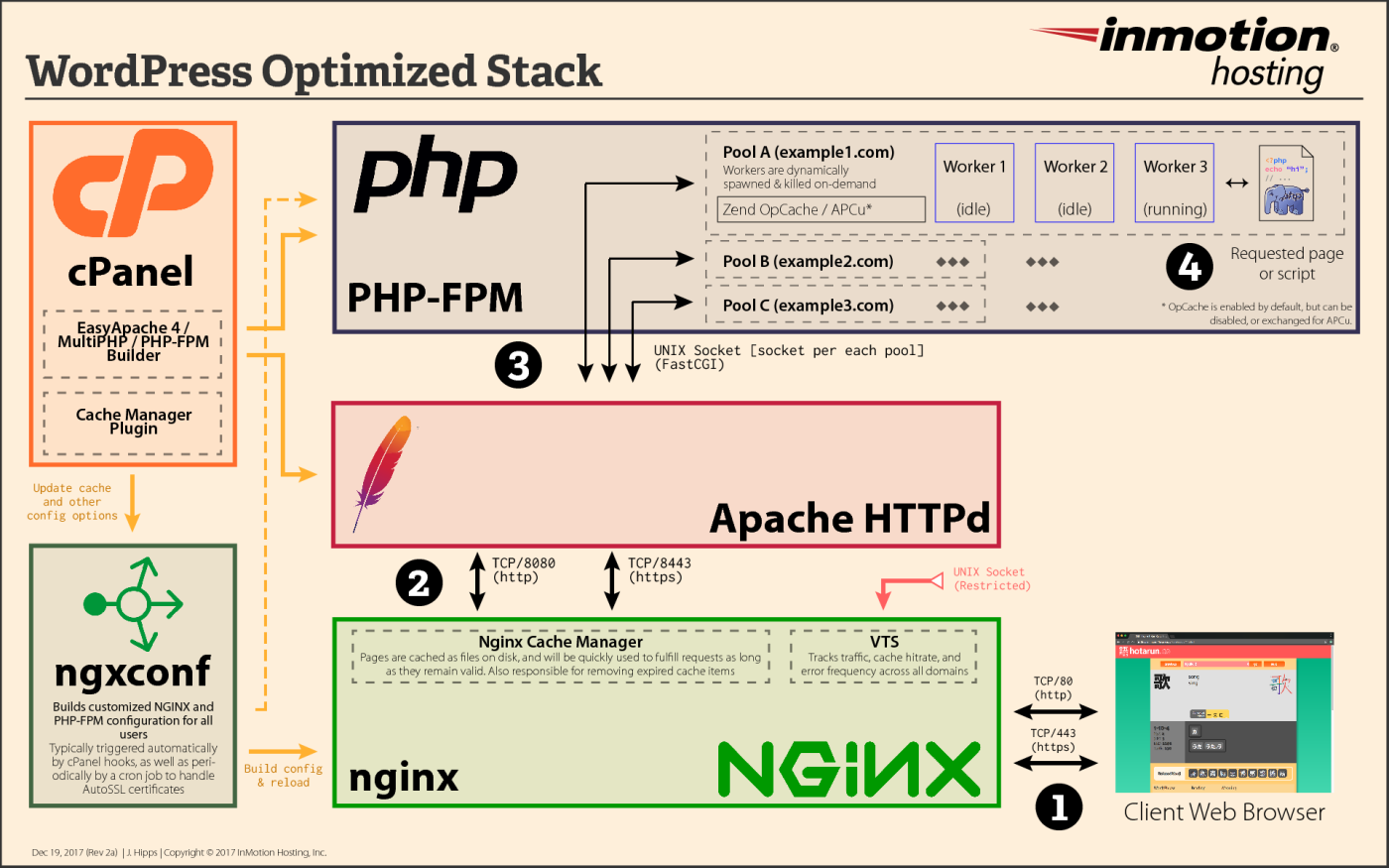
But, there are also media concerns.
In the above section on “Content Richness” you learned about how important it is to create eye-catching visuals on your site.
The catch is, graphics can add strain to your site while loading, particularly large images or videos.
I’d recommend loading media content from a CDN or hosting resources elsewhere.
For images, the Jetpack plugin provides a free image CDN. This little feature can save your site.
The image CDN takes all of your images and serves them for WordPress.com’s servers. This means they won’t slow down the loading of your site.
For video resources, you should check out a third-party video hosting options.
These little site optimizations seem like small details, but collectively, seconds saved in load time will encourage engagement with your site and encourage better search results.
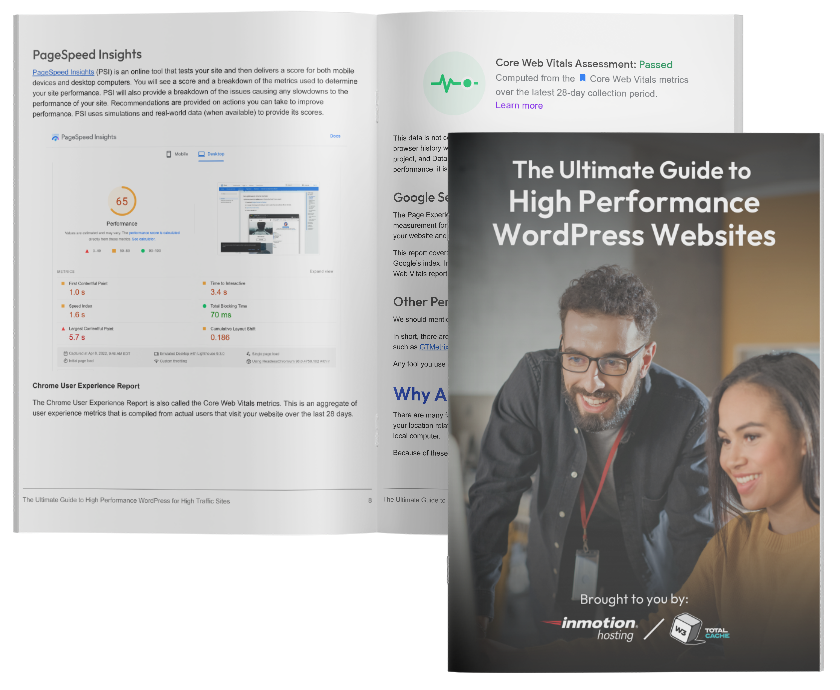
9 Tracking Your Success with Analytics
In the keyword research section of this article, you learned about how to use various SEO software to help measure your wins and losses.
Here is a brief rundown of two of the most widely used, and free, SEO tools.
These tools require some setup to link with your site, but there are WordPress SEO plugins that can guide you through this setup process.
9.1 Google Search Console
Search analytics are the bread and butter of SEO. Google Search Console is one of the most important tools for discovering how your website is being served in search engine and how people are finding you.
9.2 Google Analytics
In addition to Search Console, you can’t get the full picture of your data without Google Analytics (GA). GA provides you with data about search performance but also gives you detailed about information about how visitors are interacting with the content of your site and demographic information.
10 Grabbing and Going With WordPress SEO Plugins
There are many different SEO plugins available for WordPress. Some of these plugins provide you with both technical and on-page recommendations for your SEO. Most importantly, WordPress SEO plugins let you edit the meta tags.
But as mentioned above, any additional plugins you add to your site increase the overall load time of your pages. Some plugins bear a heavier footprint than others, but in general the fewer plugins the better.
Plugins can also assist with connecting your website to important analytics service like those provided by Google.
Considering the importance of page speed performance in SEO, you can easily justify the inclusion of an SEO plugin, but keep this points in mind for reference:
- Is the plugin being actively developed?
- Does the plugin support forum have recent activity?
- Is the plugin highly rated?
These are some good indicators to use when judging what kinds of plugins to use on your site.